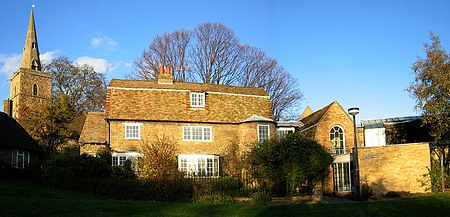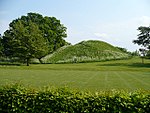Kettle's Yard
1966 establishments in EnglandArt museums and galleries established in 1966Art museums and galleries in CambridgeshireCountry houses in CambridgeshireMuseums in Cambridge ... and 3 more
Museums of the University of CambridgeNon-School institutions of the University of CambridgeUse British English from August 2015

Kettle's Yard is an art gallery and house in Cambridge, England. The director of the art gallery is Andrew Nairne. Both the house and gallery reopened in February 2018 after an expansion of the facilities.
Excerpt from the Wikipedia article Kettle's Yard (License: CC BY-SA 3.0, Authors, Images).Kettle's Yard
Castle Street, Cambridge
Geographical coordinates (GPS) Address Phone number Website External links Nearby Places Show on map
Geographical coordinates (GPS)
| Latitude | Longitude |
|---|---|
| N 52.2109 ° | E 0.1141 ° |
Address
Kettle's Yard Gallery
Castle Street
CB3 0AQ Cambridge
England, United Kingdom
Open on Google Maps









